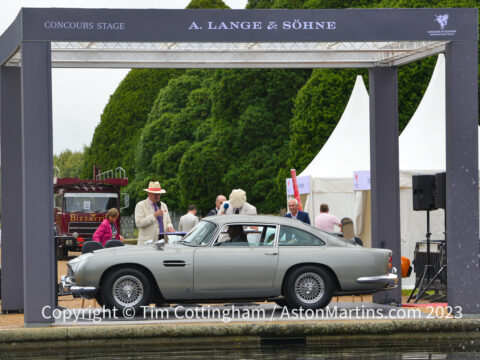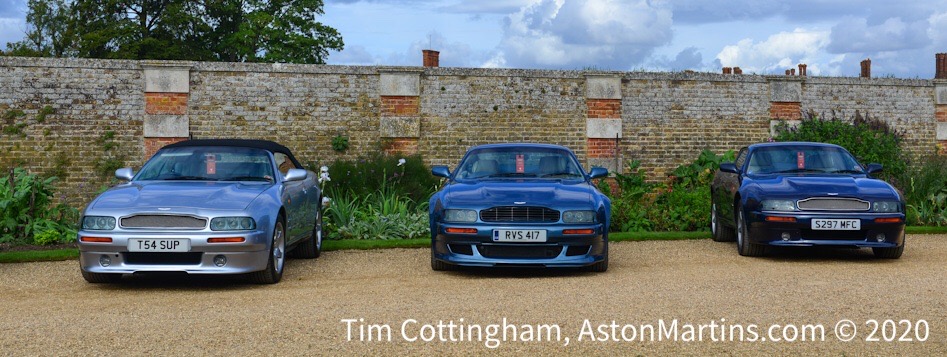Virage
- 16/08/2012Soon after the coupe was in full production it was joined by the convertible Volante version, initially shown with just two seats it was soon developed to carry four people in comfort. Finally, the mighty Vantage was unveiled in the Autumn of 1992; almost all of the panels were changed to create the most muscular Aston ever. The V8 was developed to produce an almost unbelievable 550 bhp assisted by twin Eaton superchargers.
Gradually the Virage was phased out and the standard car was restyled with many styling cues from the Vantage and called simply the V8 Coupe. Later, the V8 Volante also received the six headlights and ‘Jaffa’ grapefruit tail lights of the Vantage and had it’s wheelbase lengthened to give more space for the rear seat passengers; a real 4 seater family Aston
Works Service during the 1990’s offered optional enhancement packages for the V8’s. These have ranged from wide bodies, 6.3 litre engine conversions and on to full shooting brakes, 4 door supercharged saloons and the ultimate 600bhp V600 package for the Vantage.
The final version of the Virage, the V8 Vantage Le Mans, was made to commemorate the 40th Anniversary of the famous Aston Martin victory at Le Mans in 1959. Production was limited to just 40 cars. But even this was not quite the end; just 8 Vantage Volantes, built on the standard length chassis were completed in November 2000. These are now considered the pinnacle of coachbuilt V8 production.
Back on the other side of Tickford Street, Works Service were also busy building cars too in almost total secrecy. Only recently have AM even hinted at such special coachbuilt cars built at huge expense for extremely wealthy, Royalty and Heads of State. The full story was finally told in the book Aston Martin: Power, Beauty and Soul by my good friend, David Dowsey. I have now been given official access to the photographs of all of those special cars.
Throughout the 1990’s, the Aston Martin ‘V’ cars were considered to be dinosaurs when compared to such cars as the Ferrari 456GT and 550. But the handbuilt V8’s were so very exclusive, beautifully crafted, supremely powerful and especially the supercharged cars, extremely fast. An era that lasted for over 30 years had come to an end – traditional handbuilt cars were about to be replaced by the most advanced supercar ever built by Aston Martin, the V12 Vanquish.
Nowadays the Virage is somewhat maligned which is a great pity. Perhaps the most affordable, road legal and taxed and tested coachbuilt Aston Martin is the Virage Coupe. A car that cost in excess of £120,000 new can be purchased for less than a sixth of this – a wonderfully comfortable GT cruiser. For only a little more money and you can get a Virage Volante which can cost the same as DB7 i6 Volantes of the same age. The supercharged Vantages, Le Mans and LWB Volantes are considerably more expensive either due to their rarity, ultimate performance or both.
















